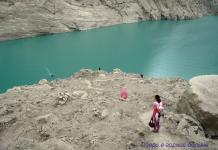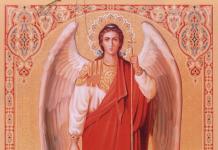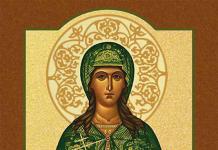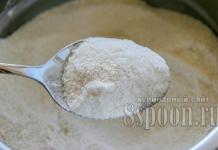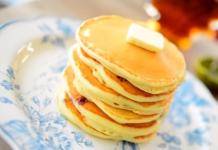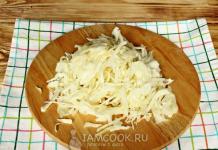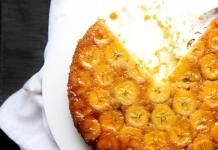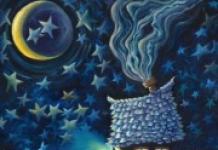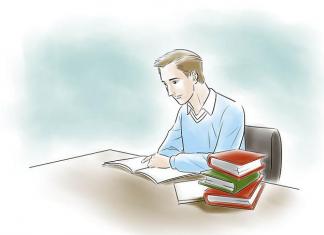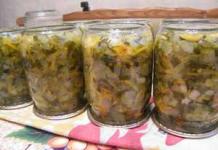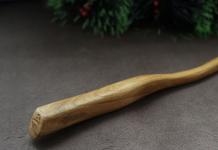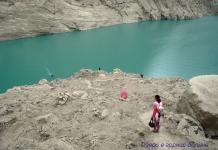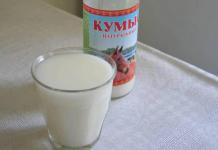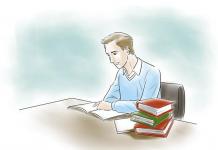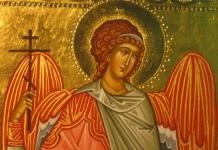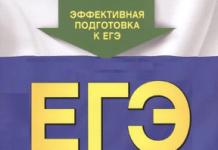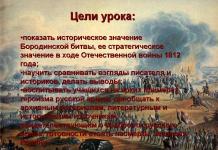Summary of a lesson on teaching literacy in the senior group
Objectives: to give the concept of “Letter”, “Sound”; vowel, consonant (hard, soft);
the ability to divide words into syllables; make sentences based on words,
suggested by the teacher.
1. In front of you is a house and this house is not simple, but magical, letters have settled in it. Each letter has its own window, its own apartment.
Very interesting residents live on the top floor: they wear red caftans and red sundresses, they have a very loud voice, they are vociferous. These residents wake up every morning, open their windows wide and begin to sing loudly and loudly. Because these residents have a loud voice, they were called vowels.
Air flows freely through the mouth,
There are no different obstacles
The sound is vowel
2. Other residents live a little lower on the floor: they wear blue caftans and blue sundresses. They are a little offended by the residents living on the floor above. They also want to live in comfortable, bright and warm apartments. And they even wanted to quarrel with the red tenants and evict them from their apartments. But when they were asked to sing as loudly and as long as the red residents did, they could not. It turned out that they only know how to growl, moo, whistle, hiss, puff, puff, rustle and will never be able to sing the way vowels sing.
And the blue tenants agreed that they should live on a floor lower than the vowels.
For this they were called consonants.
Consonants agree
Rustle, whisper, creak,
Even snort and hiss,
But I don’t want to sing to them.
Guys, do you know why we sometimes say “letter” and sometimes “sound”? How are these concepts different?
A letter is what you and I see, write or read (shows). These are all the letters.
We make the sound.
3.- I’ll tell you a riddle.
The tail is fluffy,
Golden fur
Lives in the forest
Chicken steals (Fox).
I propose to parse the word "Fox"
But first, let's remember what sounds are there?
(Consonants, vowels).
What are the consonant sounds?
(Hard, soft)
What chips do we use to indicate hard consonant sounds?
(Blue).
What chips do we use to denote soft consonant sounds?
(Green).
What chips do we use to indicate vowel sounds?
(red).
4. Educate. Look at the picture. Who is in the picture? "Fox"
What do the cells represent?
How many sounds are in the word “Fox” (Four sounds).
What is the first sound in the word "Fox". Let's say it together. (L)
What is he like? (Consonant, soft)
What kind of chip do we denote? (Green)
What gets in the way in the mouth when we pronounce this sound (L). - Language.
What is the second sound in the word “Fox”. Let's say it together. (AND)
What is he like? (Vowel)
When we pronounce the vowel sound (I), does anything bother us? (Nothing interferes).
Now let's look for the third sound. What is the third sound in the word "Fox".
Let's say it together. (WITH)
What is he like? (Consonant, hard)
What kind of chip do we denote? (blue)
What gets in the way in the mouth when we pronounce the sound (C). - tongue, teeth.
What is the fourth sound in the word "Fox". Let's say it together. (A)
What is he like? (Vowel)
What kind of chip do we denote? (Red)
When we pronounce the vowel sound (A), does anything bother us? (Nothing interferes).
How many sounds are in the word "Fox". (Four sounds).
How many syllables are in the word "Fox". (Two syllables)
What is the first syllable (LI).
What is the second syllable (Sa).
How many vowel sounds are in the word “Fox” (Two vowel sounds). Name them. (I, A)
How many consonant sounds are in the word “Fox” (Two consonant sounds). Name them. (L, S)
5 . Fizminutka
I'm a miserable fox
A wasp grabbed my tail,
Me. Poor thing, I was spinning around like that.
That broke into pieces.
We will help you, fox.
We will put you together again from letters.
6. - What word did we understand? (Fox).
Let's make a sentence with this word.
What do the proposals consist of? (from words).
Short words and long words
7. Guys, I completely forgot. On the way to kindergarten I met the postman Pechkin, he gave me a letter from Dunno. What's there, let's see.
Dunno composed a short poem, but he mixed something up and his poem turned out awkwardly. Asks for help. Listen to what Dunno composed.
Pour milk into the loaf
A can crawls across the grass
A bud was baked in the oven
And a python bloomed in the garden.
Iron, empty - can
Fragrant, pink, delicate - bud
(Rose (Bud) – a Rose that has not blossomed.
Fresh, fragrant - loaf.
Long, motley - Python.
Snake (Python)
Pour milk into a can.
A python crawls through the grass.
A loaf of bread was baked in the oven.
And a bud blossomed in the garden.
8. There are three baskets in front of you. You need to select pictures and distribute them into baskets.
In the yellow basket - pictures with one syllable,
In the blue basket are pictures with two syllables.
In the orange basket are pictures with three syllables.
Bottom line. What word did you understand?
What word did you use to make sentences?
Who did they help?
Oksana Bykova
Summary of educational activities for preparing for teaching literacy in the senior group “Acquaintance with the land of sounds”
Abstract
directly – educational activities
on literacy preparation
in the senior group
Topic: “Acquaintance with the Land of Sounds”
Program content:
introduce children to the concept of “sound”, with the help of which sounds are pronounced;
give the concept of “long” and “short” words, teach to distinguish between “long” and “short” words;
develop speech, imagination, memory, ability to prove your point of view;
cultivate a friendly attitude towards peers, the ability to work in a group, and listen to comrades.
Methodological techniques: observation, surprise moment, demonstration, explanation, questions, didactic game, game exercise.
Material: pictures of the characters Little Fox, Hedgehog, Wise Owl, notebooks “On the Road to the ABC”, “Our Copybooks”, pictures – long green ruler, short red ruler, teeth, tongue, mouth, cheeks, audio recording – clock ticking, birds singing, car , objects - belt, scarf, pointer, matryoshka, glue, match, branch.
1. Emotional mood
Children stand on the carpet in a circle.
I don't like my friends,
I'm meeting my friends.
Everyone will shake my hand
Everyone will send me greetings.
2. A surprise moment, creating a problematic situation
Guys, guests have come to us - these are the Hedgehog, the Little Fox and the Wise Owl. And they invite us to go on a great journey to the country of ABC, where letters live. But the path to the land of ABC lies through the land of sounds. This country is invisible, but it surrounds us everywhere, because sounds are everywhere, they cannot be seen. They can only be heard or spoken.
Close your eyes and listen. What sounds did you hear? (audio recording of the sound of a car, birds singing, clock ticking)
All that you just heard are sounds.
So, let's go to the country of ABC through the country of Sounds.
Guess what we'll go on?
The brothers are ready to visit,
Caught on each other
And they rushed off on a long journey,
They just left some smoke. (Train)
What is this? (This is a train.)
It's time to take your places in the trailers. The Hedgehog, the Little Fox and the Wise Owl have already sat down.
Blow like a train. (Too-too)
How do the carriages knock? (Choo-choo-choo)
3. Station “Sounds”
We arrived at the Sounds station. Go to your notebooks. Open the notebook to the first page and tell me who the Hedgehog and the Little Fox saw?
The little fox decided to check whether they really ended up in the land of sounds. On the advice of the Wise Owl, he closed his eyes and listened. What sounds did he hear? (He heard kar, me, woof, crow, moo, igogo)
Can everything you said be called sounds? (Can)
This means that we have already entered the land of Sounds.
Speech game
Guys, Hedgehog wants to play with you and invites you to write a poem together.
Educator: The goat sings along to me:
Children: Be-be!
Educator: The dog barks, tail raised:
Children: Bow-wow!
Educator: And the rooster is on the run for me
He shouted...
Children: Crow!
Educator: And the kitten squeaked:
Children: Meow!
What sounds did you make?
These sounds are made by animals. And people make speech sounds. Words are made from them. Wise Owl wants to tell you something. It turns out that speech sounds originate in the mouth.
What is in each of your mouths? (Teeth, tongue)
And if we close our mouth, what prevents us from seeing our teeth and tongue? (Lips and cheeks)
Try closing your mouth and saying “Hello” without opening your mouth.
Happened? Is it possible to talk without the help of lips, tongue, cheeks and teeth?
Game "Guess the riddle"
When we eat they work
When we don't eat, they rest.
Let's not clean them -
They will get sick. (Teeth)
Inflate them harder
Blow on something hot. (Cheeks)
He's always at work
When we speak,
And he’s resting
When we sleep. (Language)
Long and short items
The Wise Owl handed the Hedgehog and the Little Fox two rulers. Are these the same lines? (Green – long, red – short)
Hedgehog and Little Fox need to sort the objects into long and short ones. Shall we help? (belt, scarf, pointer, matryoshka, glue, match, branch)
Well done, you helped the Hedgehog and the Little Fox cope with the test.
Long and short words
Guys, Wise Owl wants to tell you a secret. It turns out that words, like objects, can be long and short. Long words have many sounds, so they take a long time to pronounce. For example: TV-le-visor. And short words have few sounds. These words are pronounced briefly. For example: house.
It happens that long objects are called a long word. E-lek-trich-ka. It also happens the other way around: a long object is a short word, and a short object is a long one.
Let's play with words too. (With a ball)
I will name the words. Can you tell me if they are long or short?
Circle, vo-pi-ta-tel-ni-tsa, smoke, vent-ti-la-tor, garden, te-le-fon, salt.
What a great fellow you are, Hedgehog and Little Fox say thank you.
4. Reflection
But our journey is over. Let's say "Goodbye" to the Hedgehog, the Little Fox and the Wise Owl. We take the train and return to the group.
Who did we meet today?
What country are we in today?
Did you enjoy the lesson?
What did you like?
Thank you for participating.
Thank you for your attention.
Publications on the topic:
Open Day. Summary of a lesson on preparing children to learn to read and write in the senior group “Magic Chest” Goal: to summarize the knowledge, skills and abilities acquired by children, developed during literacy classes in the senior group. Objectives: educational.
Final GCD for preparing children to learn to read and write in the preparatory group “Literacy” Administration of the Novouzensky municipal district Municipal preschool educational institution "Kindergarten No. 4 "Friendship" of Novouzensk.
Abstract of educational activities for teaching literacy on the topic: “Differentiation of sounds [k] - [g]” Program objectives: 1) Correctional and educational: Consolidate.
Summary of educational activities for teaching literacy in the senior group “Differentiation of sounds [G], [K]” Goal: to develop the ability to distinguish between voiced and voiceless consonant sounds [G-K] that are similar in acoustic-articulatory characteristics in syllables and words.
Summary of educational activities for preparing children for learning to read and write in the preparatory group “Adventure in the forest school” Municipal budgetary preschool educational institution "Child Development Center" - kindergarten No. 51 "Rodnichok" of the first category, village. Kagalnik,.
Software tasks.
1. Continue to teach children to distinguish between vowels, hard and soft consonants, and to characterize them qualitatively.
2. Continue to teach children to conduct a sound analysis of a word, generalize knowledge about the sound composition of a word.
3. Strengthen children’s ability to name words with a given sound and highlight it intonationally.
4. Develop auditory attention.
5. Cultivate a respectful attitude towards the answers of your comrades.
Material.
Cards for identifying sound by articulation, illustrations for sound analysis of words, red and blue chips.
Progress of the lesson
1. Introductory part.
Educator: Hello guys! Today we have guests. Let's show them what we can do and what we've learned. First of all, let’s remember the rule that helps us speak beautifully.
We always speak beautifully, clearly and slowly
We speak smoothly, loudly and, of course, in no hurry.
Educator: Guys, let's take our seats.
2. Main part
Educator: How do letters differ from sounds?
Answer: We hear and pronounce sounds, but we see, write and read letters.
Educator: Let's help our tongues pronounce sounds correctly. Let's warm it up.
Guess what sound the girl in the picture makes.
(Children guess the sound by articulation: A, O, U, I, Y, E.)
Educator: Guys, let's show how we can isolate sounds from words and characterize them. To do this, each of you will now say your name, say what the first sound is and take a letter of the desired color.
My name is Inna. The first sound in my name is [I]. It's a vowel, so I'll take the red letter.
Educator: Well done, everyone did it.
Educator: Guys, look how beautiful the garland is on our board.
This is not a simple garland
She, guys, is syllabic.
Syllables can
turn into words
If with them
Know how to handle.
I'll let those go ahead
One child performs on the board, the rest independently in their places, to the syllable that is printed on the syllable garland, finds its pair to make the word (winter-ma, sa-ni, blizzard, mo-roz).
Educator: Now let's rest a little. We go out onto the mat.
Once again we have a physical education session,
Let's bend over, come on, come on!
Straightened up, stretched,
And now they’ve bent over backwards.
(Bends forward and backward.)
We stretch our arms, shoulders,
To make it easier for us to sit,
And don’t get tired at all.
(Jerks with arms in front of chest.)
My head is tired too.
So let's help her!
Right and left, one and two.
Think, think, head.
(Rotate head.)
Even though the charge is short,
We rested a little.
(Children sit at their desks.)
Educator: Guys! I need help. The words are mixed up.
It is not known what happened, only the letter is mischievous,
She dropped into someone's house and took charge of it.
And this is what came out of it. And think about whether everything is correct.
1) We wanted to go for a walk
They put the boots on their heads. (Hats.)
2) Ten long days in a row
Aibolit sculpted the children. (Treated.)
3) Cars are floating across the sky,
People take umbrellas. (Clouds.)
4) To run to the garden,
You need to put on boots. (Put on.)
5) Dusk fell quietly
The bugs were circling in the air... (Mid flies.)
You see what happens when you mix up the letters in a word.
Educator: Guys, listen carefully:
Here's how many in K I can name:
Pan, coffee pot, box, bed,
Cow, apartment, painting, carpet,
Pantry, gate, chest of drawers, corridor...
Oh, that's enough! And the letter can get tired!
Educator: Name the words with the sound K (K’) that you remember. Let's all repeat this poem together (repeat 2-3 times, for the purpose of memorization).
Educator: Guys, look at the pictures I have (ball, elephant, book). How many words are in the word ball? What is the first letter? Vowel, consonant, hard, soft? Chips of different colors are placed corresponding to the sounds.
A syllabic and sound analysis of all words is carried out.



3. Reflection
Educator: Guys, you all did great, you coped with all the buildings. In gratitude, the letters give us a wonderful book, which we will read later.
What tasks did you like the most?
Which ones did you find difficult?
Summary of a literacy lesson on the topic “Forest”. Senior group
Description of material: I offer you a summary of direct educational activities in the senior group (5-6 years old) on the topic “Forest”. This material will be useful for preschool teachers of older groups. This lesson summary is aimed at developing the ability to conduct sound analysis of words and graphically record sentences.Integration of educational areas: “Cognition”, “Communication”, “Socialization”.
Software tasks:
1. To develop the ability to conduct sound analysis of words;
2. To develop the ability to graphically record a sentence;
3. Develop and improve children’s phonemic hearing;
4. Expand children’s ideas about the world around them;
5. Foster a caring attitude towards nature.
Equipment: forest illustration; subject pictures of animals; chips; word schemes; 2 houses with pockets; graphical diagram of the proposal; hoops
Vocabulary work: fox.
Preliminary work: looking at illustrations depicting wild and domestic animals.
Progress of the lesson
1. Organizational momentEducator: Today we have guests, let's introduce ourselves to them. Each of you will say your name and highlight the first sound that your name begins with.
2. Statement of the topic and purpose of the lesson
Educator: What is the name of our lesson? What do we do in literacy? Do we need literacy in life? For what?
Educator: Today we will play and perform various exercises, you will receive chips for your work, and at the end you will count how much you have earned.
3. Phonetic exercise
- Listen to the music. (Forest music sounds)
– Where can all these sounds be heard? What is a forest? (Show illustration).
- Who lives in the forest? What can you hear in the forest? Let's remember forest sounds and designate them with chips. How does a strong wind blow?
– What chip do we use to denote sound? How do the leaves on the trees rustle?
– How do beetles buzz? (W-W-W)
– How do little mosquitoes ring? (Z-z-z)
4. Sound analysis of the word “fox”
Educator: Now listen to a riddle about a forest dweller:
Cunning cheat
Red head
A fluffy tail is a beauty
Who is this? (Fox.)
Educator: Let's divide the word "fox" into syllables. How many syllables? (2)
Educator: Let's say the word. Which syllable is pronounced with more force? Name the first syllable. – What was the first sound you heard? Let's denote it with a chip.
Children lay out a diagram of the word “fox”.
Educator: How many sounds are there in total? How many vowels are there in total? Do you agree?
5.Exercise for the eyes
6. Graphic recording of the proposal
Educator: Let's make a sentence about a fox and write it down using a diagram. (Children offer various options and write down sentence patterns).
Educator: Who is this fox? What animal is this? Why? What other wild animals do you know?
7. Didactic game “What is this?”
Educator: In the forest it may be green. What is this? (Leaves, grass, grasshopper, frog, spruce.)
Educator: In the forest it can be long. What is this? (Snake, caterpillar, forest path.)
Educator: In the forest it can be fast. What is this? (Hare, bird, squirrel.)
Educator: It can be dangerous in the forest. What is this? (Snake, bear, poisonous mushrooms.)
8. Physical education minute
Educator: Let's play and relax in a forest clearing. The game is called "Make no mistake." Now music will sound, and you must run to the music around hoops in which there are pictures with animals. If the animal depicted in the picture lives in the forest, you run into the hoop at the end of the music, if not, then you are eliminated from the game. (Play 2 times) (Pictures of wild and domestic animals).
9. Game “Find a house for an animal”
Educator: You know that many wild animals live in the forest. Let's play the game "Find a house for an animal." (Visibility of 2 houses: with one and two pocket windows). If the animal's name has one syllable, then we move it into a house with one window; if it has two syllables, then into a house with two windows. Pictures: mouse, wolf, bear, fox, squirrel.
10. Summary of the lesson
Educator: What did we do today? What did you like most? What did you do well? What was causing the difficulties? Count how many chips each of you has?
Well done!
Summary of a lesson on teaching literacy in the senior group
"Grandfather Literacy's Magic Box"
Tasks: Learn to name words with a given sound and determine the place of the sound in words. Develop intonation expressiveness. To develop children's phonemic awareness, imagination, and creative thinking. Strengthen your knowledge of vowels and consonants. Practice the ability to come up with a word with a given sound and compose a sentence with a given word. Strengthen the ability to divide a word into syllables.
Progress of the lesson:
/Knock on the door/
Educator: Guys! The package has arrived! It is written: “From Grandfather Literacy from the country ABVGDeyki”! Let's print it out and find out what's inside.
(Children and teacher open the package, take out a chest and a letter from there)
Educator: The chest is not simple! With seven castles! Let's read the letter:
“Dear children of the senior group!
Grandfather of Letters writes to you from the country of ABVGDeyki! I have heard that you are very inquisitive guys and love to study. I sent you a gift in a chest. But the chest is magical, with seven locks. Each lock has its own key. Finding the keys is not difficult, you just need to guess where they are. My magical assistants hid the keys in your group. Guess my riddles and find out where to look for the keys. Place the keys on the locks and the chest will open! True, there is another secret! But you will learn about this later. I wish you success!
Grandfather of Letters. »
Educator: Wow! Well, are you interested in knowing what is in the chest? Shall we look for the keys?
(Children's answers)
Educator: And here are the riddles in the letter. We are looking for the first key. It is located where the riddle refers to:
There is a portrait in the room,
Similar to you in everything.
Laugh and in response
He will laugh too.
Children: This is a mirror! We must look where the mirror is!
(The teacher takes out the key from behind the mirror)
Educator: But the key is not easy! He has a task. This is the secret mentioned in Grandfather Literacy’s letter! Let's cope with this task - we'll open one lock!
Task No. 1.
Educator: Grandfather Literacy's assistants have brought you a card with a picture of a flower. What kind of flower is this?
Children: Mac
Educator: Let's count how many sounds there are in the word Mak. Which one is the first?
sound?
Children: Mmmm...
Educator: Sound M. Let's try to sing this sound. Mmmm... Is it working out? What's stopping us?
Children: Lips
Educator: If we can't sing it, what sound is it?
Children: Agreeable
Educator: Right! What is the second sound in the word Mac?
Children: M-aaaa-k! Sound A
Educator: Let's try to sing this sound.
Children: Ahh...
Educator: Sound A can be sung, nothing interferes with it. What sound is this?
Children: Vowel.
The teacher and the children try to sing the third sound K and determine that it cannot be sung, which means it is a consonant.
Educator: Well done, you completed the task. Here's your first key!
(The teacher “inserts” the key into the first lock)
Educator: Listen to the following hint where to look for the key:
Not a bush, but with leaves,
Not a person, but talking,
Not a shirt, but a sewn one.
Children: Book! We will look for the key where we have books in our group!
(They find the second key, complete the second task./
Task No. 2.
Educator: And the task is this: play the game “Say a Word.” Grandfather Literacy loves poetry very much. One day he began to remember them, but... forgot the words. Let's help Grandfather!
Over the meadows, over the water
The torrential rain poured down,
And then it hung
There is a rocker in the sky.
Makes the kids happy
Colored... (rainbow).
In the morning the grandfather asked his granddaughter:
Why don’t you wash... (hands)
Mikhail played football
And scored into the goal... (goal)
4) The sun is shining very brightly,
The hippopotamus is very... (hot).
Where did the sparrow have lunch?
At the zoo...(animals)
Andreyka in his garden
Watered the flowers from... (watering can)
The beetle fell and could not get up,
He is waiting for someone... (to help him)
(After completing the task, the children “insert” the second key into the chest)
Educator: Here is another riddle from Grandfather Literacy:
Look, the house is standing
Filled with water to the brim,
Without windows, but not gloomy,
Transparent on four sides.
In this house the residents are -
All are skilled swimmers.
(Aquarium)
(Children take out the key, it is located near the aquarium)
Task No. 3.
Educator: Here is the third task with the third key: this is a story.
“Zina loved to jump over rope. She asked her mother for a rope and ran with it to the clearing. She looked around - there were no her friends! Zina began to loudly call her friends: Ma-sha!, Ma-ri-na!, Ta-nya!, Na-ta-sha!, Wa-la!. The girlfriends heard it, came running and started playing merrily.”
Questions for children:
What did the girl call her friends? Did she say the whole word, or did she say it in parts?
Why did the girl call her friends that way? (answer: it sounds better this way)
You and I know that all words can be divided into syllables, and we will now try to count how many syllables there are in the names of girls.
(Children divide names into syllables using two techniques: using a hand placed under the chin and using clapping).
Educator: Well done, you completed the third task. Here, hold the key! We already have three locks open! Difficult? Tired? You tried really hard! Let's rest now. Guess who and in which fairy tale was also looking for a key, only not a simple one, but a golden one?
Children: Pinocchio! In the fairy tale "The Golden Key".
Fizminutka:
Pinocchio stretched, spread his arms to the sides,
Once he bent down, he still couldn’t find the Key.
Two - he bent down to get us the key,
Three - bent over. We need to stand on our toes.
(Children recite a poem. Perform movements)
Educator : Well, in order for us to find the fourth key, we’ll solve one more riddle:
He writes when dictated,
He draws and draws, -
And this evening
He will color our album.
Children: This is a pencil! We need to look for the key where our pencils are!
Task No. 4.
Educator: Right! And you need to complete the next task with a pencil and writing (or a notebook, you can give pictures that the children must shade)
(Children complete the task and “open” the fourth lock with the key).
Educator: And we will look for the fifth key here:
What a miracle - bricks
I received it as a gift.
What I put together, I break,
I'm starting all over again.
(Children guess: Building bricks. Find the key.)
Task No. 5.
Educator: Here it is, the key, and on it the next task is the game!
I will name the actions, and you will answer who performs them.
Who and what flies? (A plane, a bird, a balloon, a butterfly, a fly, a piece of fluff, yellow leaves from the trees...)
Who and what floats? (Ship, board, man, dog...)
Who and what is heating? (Oven, sun, heating pad...)
Who and what is coming? (Man, rain, snow, time...)
Who and what is worth? (Man, house, pillar, table...)
Who and what is jumping? (Ball, hare, man...)
(Children complete the task, receive a key, “open” the fifth lock).
Educator: This is the last key we need to find. Well, try to guess where to look for it:
They beat him, but he doesn’t cry,
Only higher, higher it jumps!
Children: It's a ball! And we have the balls in the sports corner.(Find the key)
Task No. 6.
Educator: Listen to the last, sixth task! This is the game "Shop". We came to the grocery store. You can only buy products that have the sound “S” in their names. What will you buy? Children name the products: cheese, sausages, sugar, salt, crackers, juice, sausage, beets, cabbage.
And now we choose only those products whose names contain the sound “K”: potatoes, cocoa, coffee, caramel, cereals, chocolate.
Let's choose products whose names contain the sound "M": milk, butter, pasta, sour cream, flour.
(When children name words, you can ask them to come up with a sentence with the named word)
After completing the task, the children receive the sixth key and “insert” it into the lock. The chest opens.
Educator: Guys, look what lies here!
Children: It's Cookies! It's in the shape of letters!
Educator: You can play with letters, and you can drink tea and cookies! Thanks to Grandfather Literacy! Guys, tell me, did you enjoy completing Grandfather Literacy’s tasks today? What did you like most? What task did you have difficulty completing?
Well done to all of you! With your help we can open any lock! And now I invite everyone to drink tea with magic cookies!


